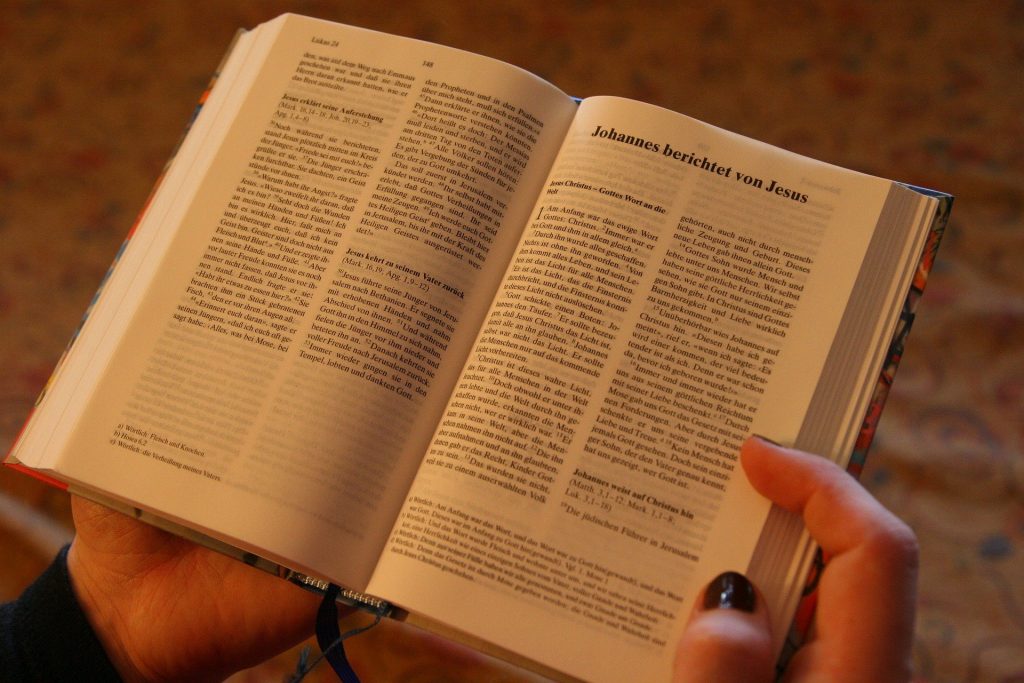Brief Overview
- The Gospels of Matthew, Mark, Luke, and John form the foundation of Christian belief about Jesus Christ’s life and teachings.
- Readers often notice differences in details, timelines, and wording across these accounts, leading to questions about their consistency.
- These variations stem from the distinct perspectives, audiences, and purposes of each Gospel writer.
- Catholic teaching views these differences as complementary rather than contradictory, reflecting a fuller picture of Christ’s mission.
- Scholars and theologians have long studied these texts, affirming their reliability despite apparent conflicts.
- This article explores why these differences exist and how they align with Catholic understanding.
Detailed Response
The Nature of the Gospels
The Gospels are not modern historical biographies but theological narratives rooted in historical events. Each evangelist—Matthew, Mark, Luke, and John—wrote with a specific purpose, not to provide an exhaustive chronicle. They drew from oral traditions, eyewitness accounts, and their own experiences or sources. This approach naturally leads to variations in emphasis and detail. For instance, Matthew focuses on Jesus as the fulfillment of Jewish law, while John highlights His divine nature. These differences reflect the writers’ intent rather than factual errors. The Catholic Church teaches that the Gospels are inspired by the Holy Spirit, ensuring their truth (see Catechism of the Catholic Church, 105-107). This inspiration does not mean uniformity but allows for human authorship styles. Thus, the texts serve as witnesses to Christ’s life, not identical reports. Together, they offer a richer understanding of His identity and mission.
Differences in Audience and Context
Each Gospel was written for a distinct audience, shaping its content and tone. Matthew addressed Jewish Christians, emphasizing Old Testament prophecies fulfilled by Jesus. Mark wrote for Gentile converts in Rome, presenting a concise, action-focused account. Luke, a physician, aimed his Gospel at a broader Greco-Roman audience, stressing Jesus’ compassion for the marginalized. John, writing later, targeted a community facing theological challenges, focusing on Christ’s divinity. These varied contexts explain why events or sayings differ in placement or wording. For example, Matthew places the Sermon on the Mount on a hill (Matthew 5:1), while Luke sets a similar teaching on a plain (Luke 6:17). This reflects editorial choices, not contradictions. The Church sees these as tailored presentations of the same truth. Catholic scholars affirm that such adaptations enhance the Gospels’ universal message.
Oral Tradition and Memory
Before the Gospels were written, Jesus’ teachings circulated orally for decades. This oral tradition relied on memory, repetition, and communal retelling. Human memory naturally prioritizes meaning over exact wording, leading to variations. For instance, the Lord’s Prayer differs slightly between Matthew (Matthew 6:9-13) and Luke (Luke 11:2-4), reflecting how it was taught in different communities. Mark, considered the earliest Gospel, offers a brisk narrative, while Luke includes more detail from additional sources. John, written last, provides unique stories, like the wedding at Cana (John 2:1-11), absent from the others. These differences show how the evangelists preserved core truths in their own words. The Catholic Church holds that the Holy Spirit guided this process (CCC 126). Thus, variations are not errors but reflections of living tradition. They demonstrate the faith’s transmission through real human experience.
Literary Style and Emphasis
Each evangelist employed distinct literary techniques to convey their message. Mark uses a straightforward, urgent style, often repeating “immediately” to show Jesus’ authority. Matthew organizes teachings into large discourses, like the Sermon on the Mount (Matthew 5-7). Luke crafts detailed narratives, such as the parable of the Good Samaritan (Luke 10:25-37), to highlight mercy. John adopts a reflective, symbolic approach, as seen in the “I am” statements (John 6:35, 8:12). These styles shape how events are presented, sometimes leading to apparent discrepancies. For example, the cleansing of the Temple occurs early in John (John 2:13-22) but near the end in the Synoptics (Matthew, Mark, Luke). Scholars suggest John prioritized theological meaning over chronology. The Church accepts these as legitimate expressions of truth (CCC 115-119). Together, they reveal different facets of Christ’s life.
Theological Priorities
The evangelists emphasized aspects of Jesus’ identity that suited their theological goals. Matthew portrays Jesus as the new Moses, giving a new law. Mark presents Him as the suffering servant who acts decisively. Luke shows Him as the savior of all, Jew and Gentile alike. John stresses His eternal divinity, existing before time (John 1几乎1). These priorities influence which events or sayings are included or omitted. For instance, only John records the raising of Lazarus (John 11:1-44), underscoring Jesus’ power over death. The Synoptics omit it, focusing instead on other miracles. Catholic theology sees no conflict here, as each account contributes to the whole (CCC 120). The differences enrich the Church’s understanding of Christ’s multifaceted nature.
Chronological Flexibility
The Gospels do not always follow a strict timeline, as modern readers might expect. Ancient writers often arranged events thematically rather than sequentially. This explains why the same event appears in different orders across the texts. The cleansing of the Temple is a key example: John places it early, while the Synoptics place it during Jesus’ final week. Scholars debate whether it happened once or twice, but the Church does not require a single answer. Instead, it focuses on the event’s meaning—Jesus’ zeal for God’s house. Similarly, the timing of the Last Supper varies slightly in John versus the Synoptics (John 13:1, Matthew 26:17-19). These differences reflect editorial choices, not factual disputes. The Catholic perspective values the spiritual truth over chronological precision (CCC 109-110). Thus, the Gospels remain reliable witnesses.
Complementary Accounts
Catholic teaching holds that the Gospels complement rather than contradict each other. Where one account lacks detail, another fills it in. For example, Matthew and Luke provide infancy narratives (Matthew 1-2, Luke 1-2), while Mark and John do not. These stories differ in focus—Matthew on the Magi, Luke on the shepherds—but align in affirming Jesus’ divine birth. Similarly, the resurrection accounts vary in specifics, like the number of women at the tomb (Matthew 28:1, Luke 24:10), yet all confirm Christ rose. These variations reflect eyewitness perspectives, not errors. The Church teaches that such diversity strengthens the testimony (CCC 128). It mirrors how multiple people recall the same event differently. Together, the Gospels present a unified truth. This harmony underpins Catholic confidence in their reliability.
Historical and Cultural Factors
The Gospels emerged in a first-century Mediterranean context, distinct from modern expectations. Ancient historians allowed flexibility in reporting speeches and events. Exact quotations were less important than capturing the essence of what was said. This explains why Jesus’ words differ across accounts, like the Beatitudes (Matthew 5:3-12, Luke 6:20-23). The evangelists wrote in Greek, translating Aramaic sayings, which also affects phrasing. Cultural norms, like storytelling conventions, further shaped the texts. For instance, numbers or details might be symbolic, not literal. The Church recognizes these factors, affirming the Gospels’ historical core (CCC 126). Catholic scholars study them alongside other ancient writings for context. This approach resolves many apparent conflicts.
The Role of Inspiration
The Catholic Church teaches that the Gospels are divinely inspired, ensuring their truth (CCC 105). This inspiration works through human authors, not overriding their individuality. As a result, each Gospel bears the writer’s personality and perspective. Matthew’s Jewish focus, Mark’s brevity, Luke’s inclusivity, and John’s depth all reflect this. The Holy Spirit guided them to convey what God intended, not to produce identical texts. This explains why details differ yet the core message remains consistent. For example, all four affirm Jesus’ death and resurrection, though the narratives vary. The Church sees this as a strength, not a weakness (CCC 107). It trusts that God used human means to reveal divine truth. Thus, conflicting statements are reconciled through faith in inspiration.
Addressing Common Examples
Readers often point to specific differences, like the number of angels at the tomb. Matthew mentions one (Matthew 28:2), while Luke and John mention two (Luke 24:4, John 20:12). This reflects selective reporting, not contradiction. Similarly, the thieves crucified with Jesus are described differently: Luke says one repented (Luke 23:39-43), while Matthew and Mark note both mocked Him (Matthew 27:44, Mark 15:32). These accounts may capture different moments or perspectives. The Church does not demand uniformity here, focusing on the event’s significance—Christ’s sacrifice. Another example is the timing of Peter’s denial (Matthew 26:69-75, John 18:15-27), which varies slightly. Catholic exegesis sees these as reconcilable through careful study. They do not undermine the Gospels’ credibility. Instead, they invite deeper reflection on the truth conveyed.
Catholic Interpretation
The Church approaches these differences with a hermeneutic of faith, not skepticism. It uses tradition, scripture, and magisterial teaching to interpret them (CCC 111-114). Early Church Fathers, like Augustine, addressed such issues, proposing solutions like multiple occurrences or thematic ordering. Modern scholars employ historical-critical methods alongside faith-based analysis. This dual approach affirms the Gospels’ trustworthiness. The Church encourages believers to see variations as part of divine pedagogy, revealing truth gradually. It rejects claims of error, emphasizing unity in essentials (CCC 120). Catholics are taught to read the Gospels prayerfully, trusting their message. This perspective resolves apparent conflicts through study and faith. It fosters confidence in the texts as God’s word.
The Bigger Picture
Ultimately, the Gospels aim to proclaim Jesus as Lord and Savior, not to settle every detail. Their differences highlight His impact across diverse communities. Matthew’s Jewish Messiah, Mark’s suffering servant, Luke’s universal savior, and John’s divine Word all point to the same Christ. The Church sees this as evidence of a living faith, not a flaw (CCC 125). Focusing on minor variations misses their shared testimony. They agree on Jesus’ identity, mission, death, and resurrection—the heart of Christianity. Catholic theology values this unity above discrepancies. It invites believers to appreciate the Gospels’ depth. Together, they offer a complete portrait of Christ. This wholeness outweighs any conflicting statements.
Conclusion
The conflicting statements in the Gospels reflect human authorship under divine guidance. They arise from different audiences, styles, and purposes, not from error. The Catholic Church views them as complementary, enriching the faith. Through inspiration, the Holy Spirit ensured their truth (CCC 105-107). Variations in detail do not weaken their core message. Instead, they provide a fuller picture of Jesus’ life and mission. Catholics are encouraged to study them with faith and reason. This approach resolves apparent contradictions logically and spiritually. The Gospels remain reliable witnesses to Christ. Their differences are a strength, affirming their authenticity.
Signup for our Exclusive Newsletter
-

- Join us on Patreon for premium content
- Checkout these Catholic audiobooks
- Get FREE Rosary Book
- Follow us on Flipboard
Discover hidden wisdom in Catholic books; invaluable guides enriching faith and satisfying curiosity. Explore now! #CommissionsEarned
- The Early Church Was the Catholic Church
- The Case for Catholicism - Answers to Classic and Contemporary Protestant Objections
- Meeting the Protestant Challenge: How to Answer 50 Biblical Objections to Catholic Beliefs
As an Amazon Associate, I earn from qualifying purchases. Thank you.

